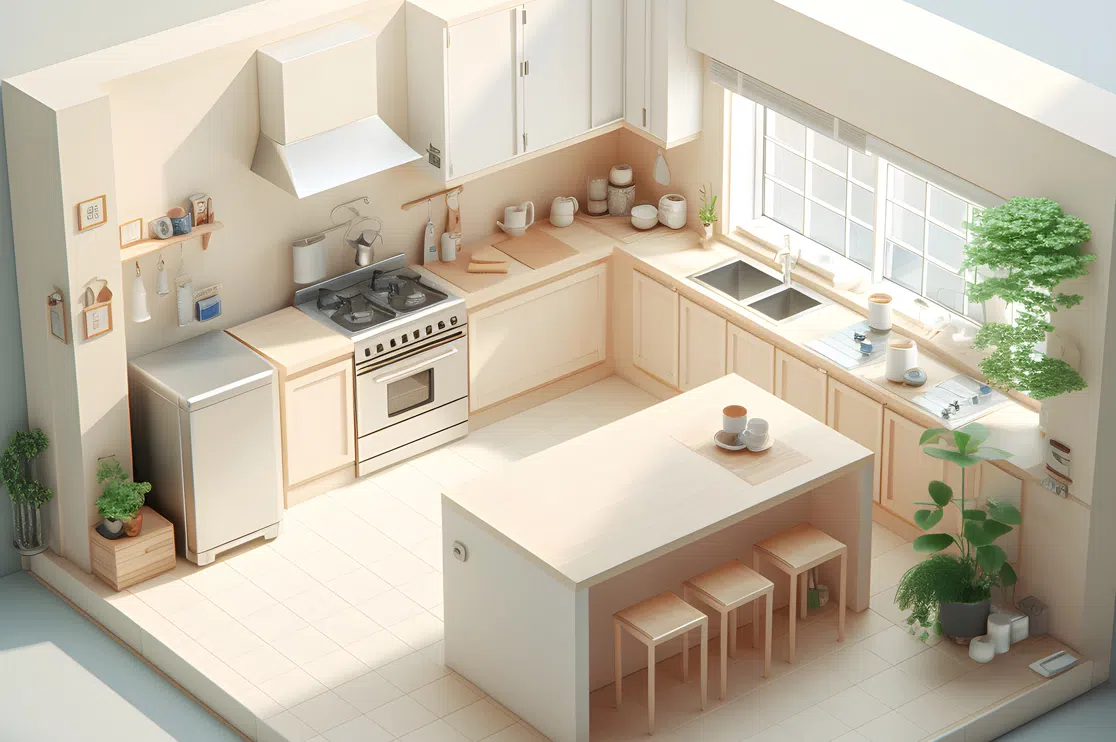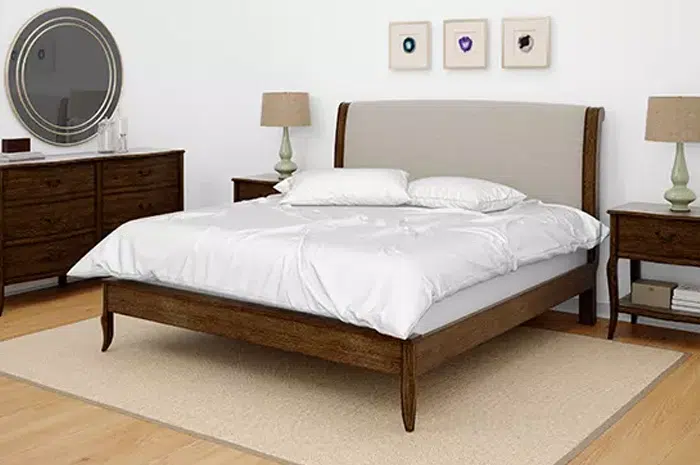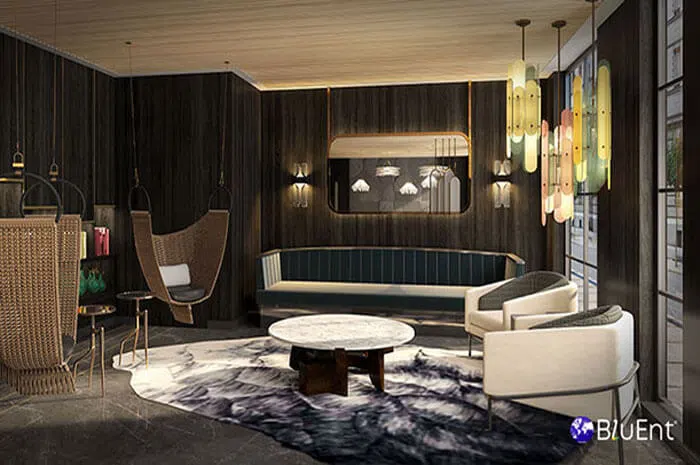Chairs on a lit stage inside a building
Balancing acoustics will help make any space, whether commercial or residential, more comfortable. Part of such acoustic design is choosing the right fabric for your wall panels.
Table of Contents
Introduction
Fabrics for acoustic design are heavier and thicker than other fabrics. They are often used in theatre curtains and studio blankets.
While acoustic fabric is particular to the objective of modifying sound, other fabrics, such as velvet or burlap, can also be used if they have sound blocking, absorbing and reflecting properties.
Acoustic fabric is used to cover acoustic treatment products, such as panels. It hence serves as a complement to acoustic panel design. The fabric needs to be acoustically transparent so that the treatment product can function optimally.
The material covering acoustic panels plays an important role in helping to balance the sound in a room. This applies to offices, restaurants, home theatres, private recording studios, and even educational settings.
The absorption coefficient or class indicates the amount of sound that a material can absorb within a certain range of frequency. For example, if the coefficient is 0.30, then 70% or 0.70 of sound is transmitted or reflected through that material.
Fabrics of different densities and weaves will give you distinctly different results because they interact with sound in their own ways. Hence, you should choose a fabric for your specific purposes and take advantage of interior rendering to know what the result will look like.
What are the Types of Acoustic Fabrics?
1. Acoustically Transparent: These fabrics permit soundwaves to pass through as though they are not even there. To check whether a fabric is acoustically transparent, blow through it with your mouth. If the air passes through with ease, it is transparent.
This fabric should be dust resistant, stain resistant, strong and durable. Ideally, it should also be fire rated.
2. Sound Absorbing: This fabric is porous and thick and absorbs sound frequency. Sound waves enter the fabric, but some become trapped in the folds and fibers and are converted into heat.
The waves that pass through the fabric will be dampened. Reverberation and echo are more controlled.
Look for a thick, thirty-two-ounce velour type cloth. You can also choose blackout curtains.
Factors to Consider When Choosing Fabrics For Acoustic Design
- The fabric should not get in the way of the acoustic panel’s objective
- Sound should pass through the fabric and into the acoustic panel.
- The fabric should not reflect the sound back into the space.
- Fabrics used on vertical surfaces should pass the ASTM E84 Tunnel Test for flammability. The test determines how quickly the fabric burns and how much smoke and flame is generated.
- If, rather than blocking sound, you want to absorb it, stick to more pliable and softer materials.
Be judicious when selecting your fabric. For example, for a vertical surface, polypropylene and polyester are good choices, but nylon is not, since it retains a lot of moisture. Hence, nylon will begin to sag and look bad when humidity is high.
The Best Fabrics for Balancing Acoustics
Whether you want to cover wall panels or hang up some curtains, there are many choices in the market.
1. Acoustic Fabric
Acoustic fabric is popular in the music industry due to its specific quality. It can, however, also be used for residential curtains.
2. Burlap
Burlap’s open-weave pattern means both air and sound can pass through, and it is commonly used for wrapping acoustic panels.
This fabric helps sound to travel, yet stops it from exiting a space. Hence, the noise will remain contained.
Burlap is best used with another sound-blocking material beneath it. This can be useful when setting up wall hangings or curtains.
3. Velour
If you want a look similar to velvet but don’t want to splurge, velour is a good alternative. Velour is a high-opacity fabric that can be used for everything from window coverings to wall hangings. It controls how much noise leaves a space, and hence is commonly used in theaters, stages and cinemas.
4. Velvet
Velvet isn’t just a luxurious, classy fabric. It is also known for its sound absorbing qualities. Generally, the heavier, the better. However, the thickness of the fabric may not necessarily indicate its weight.
If you want to absorb a lot of sound, you can use a double layer of the velvet.
5. Wool
If you want a carpet for acoustic design, wool is a great choice. Because of the various sizes and shapes of fabric used, wool is good at deflecting and absorbing different frequencies.
You don’t necessarily have to keep your wool carpet on the ground – many musicians hang carpets up in studios for acoustics, making it complementary to any acoustic wall design.
6. Mass Loaded Vinyl
Mass loaded vinyl was introduced in the 1960s and continues to be a popular fabric for sound absorption, noise reduction and soundproofing. Sound that travels through it dissipates, and so noise does not get through your walls.
There are many ways in which you can use mass loaded vinyl. However, it works best when applied in sheets with drywall, or when fastened to an outer wall. The material is also relatively cheap while remaining effective.
Having said that, bear in mind that you may not want this as your first option if you are very keen on the aesthetics of your space.
7. Foam
Foam, which you can put virtually anywhere, absorbs sound without reflecting it. Hence, the sound is less likely to travel.
While regular foam does work well, for best results, use acoustic foam.
Conclusion
We hope this article has given you some insight into choosing the right fabric for acoustics, whether your project involves a large civil engineering project or a small home office.
For the best experience, acoustic design should be considered while designing any space, and included in the interior design drafting and 3D rendering. BluEntCAD are experts in both services and have been operating since 2003.
Our experienced professionals serve large homebuilders, real estate developers, interior designers, commercial architects, home renovators, home designers, design build contractors, and remodelers.
Ready to get great acoustics with design drafting and 3D rendering? Contact us now!
Maximum Value. Achieved.







 Best 3D Custom Wardrobe Designs for Your Bedroom
Best 3D Custom Wardrobe Designs for Your Bedroom  7 Stunning 3D Kitchen Design Ideas for a Perfect Remodel
7 Stunning 3D Kitchen Design Ideas for a Perfect Remodel  Shaker Style Furniture Trends and Key Elements Every Furniture Designer Should Know
Shaker Style Furniture Trends and Key Elements Every Furniture Designer Should Know  The Latest Furniture Trends for Furniture Design and Manufacturing Companies
The Latest Furniture Trends for Furniture Design and Manufacturing Companies